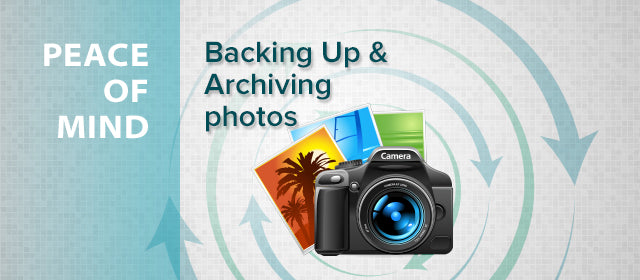When it comes to spending money on photography equipment, there are items that are fun to purchase—no matter how much it breaks the bank—and other items that are a little more painful. It's easier to spend that saved up wad of cash on a brand-new beautiful lens, but when it comes to forking out money on something like a hard drive for storing all those thousands of photographs you've accumulated, it's not exactly...exciting. Though, in comparison to a camera or a lens, it can be just as important as any piece of equipment you use to achieve those important photographs.
When it comes to figuring out an archiving strategy to easily locate and access past content, it may not spark your creative juices, but it's important to have that peace of mind. With all the variables with digital data, photographs and videos require special care for storing against damage or loss. A single computer failure can wipe-out your entire digital collection without proper storage—a photographers’ nightmare. But thankfully, there are easy ways around this type of disaster with careful development of workflow and a simple process of editing, storing and archiving your work.
There are several processes you could follow to archive your work, all of which are excellent choices, but the following three basic rules you should use will ensure saving your work to be as streamlined and simple as possible.
Folder #1 (Computer Back-Up)
Have a folder of untouched, unedited photographs. These images are your originals straight from the camera in which you never touch, edit or alter. This folder is usually kept on your work computer. This folder serves as a backup used for making duplicates or accessing a file if a mistake has been made during post-processing and you need to start from scratch. Create a duplicate folder from this backup when beginning your editing process.
Folder #2 (External HD Back-Up)
 Having a second set of your images that are unedited is so important! Before deleting anything from your memory card, it's vital to ensure that you have an unedited folder that you always have access to as well as a second folder with the same images on a different device other than your camera and computer. Keep this folder somewhere other than where the first folder is kept, usually a hard drive; it would be no use to you if your computer crashed with both sets of backups on the same storage device. This rule stands so that when you delete the information from your memory card, you have established two separate backups. One of our more popular hard drives is the G-Technology 1TB G-Drive.
Having a second set of your images that are unedited is so important! Before deleting anything from your memory card, it's vital to ensure that you have an unedited folder that you always have access to as well as a second folder with the same images on a different device other than your camera and computer. Keep this folder somewhere other than where the first folder is kept, usually a hard drive; it would be no use to you if your computer crashed with both sets of backups on the same storage device. This rule stands so that when you delete the information from your memory card, you have established two separate backups. One of our more popular hard drives is the G-Technology 1TB G-Drive.
Folder #3 (Online or Additional HD Archive)
The third folder is a backup of your photographs that are located on an off-site location that is specifically for archiving. The folder should be stored somewhere other than your home or workplace in the event of a disaster like a flood or fire. Several online websites provide this type of archiving that allow you to upload your images and store them safely. Sites like Flickr, Smugmug or DropBox provide inexpensive secure storage solutions with options of unlimited storage room or smaller sizes depending on price. Many photographers are known for having their third set of archived images kept on a separate hard drive stored in safety deposit boxes for added security—or paranoia. Either way, they are safe!
It's important to establish with your event or portrait photography clients that you will only store images on your computer or hard drive for a specific amount of time, after that it is up to them to create their own backups. Despite the fact that it takes up so much space, always keeping a folder of the edits you pass on to a client in the case of an emergency can be a miracle for some clients that just might have a computer disaster of their own; one reason it is so important for clients to understand the importance of backing up images themselves.
Check out the dozens of options we offer at pictureline for external hard drives for archiving your work!

